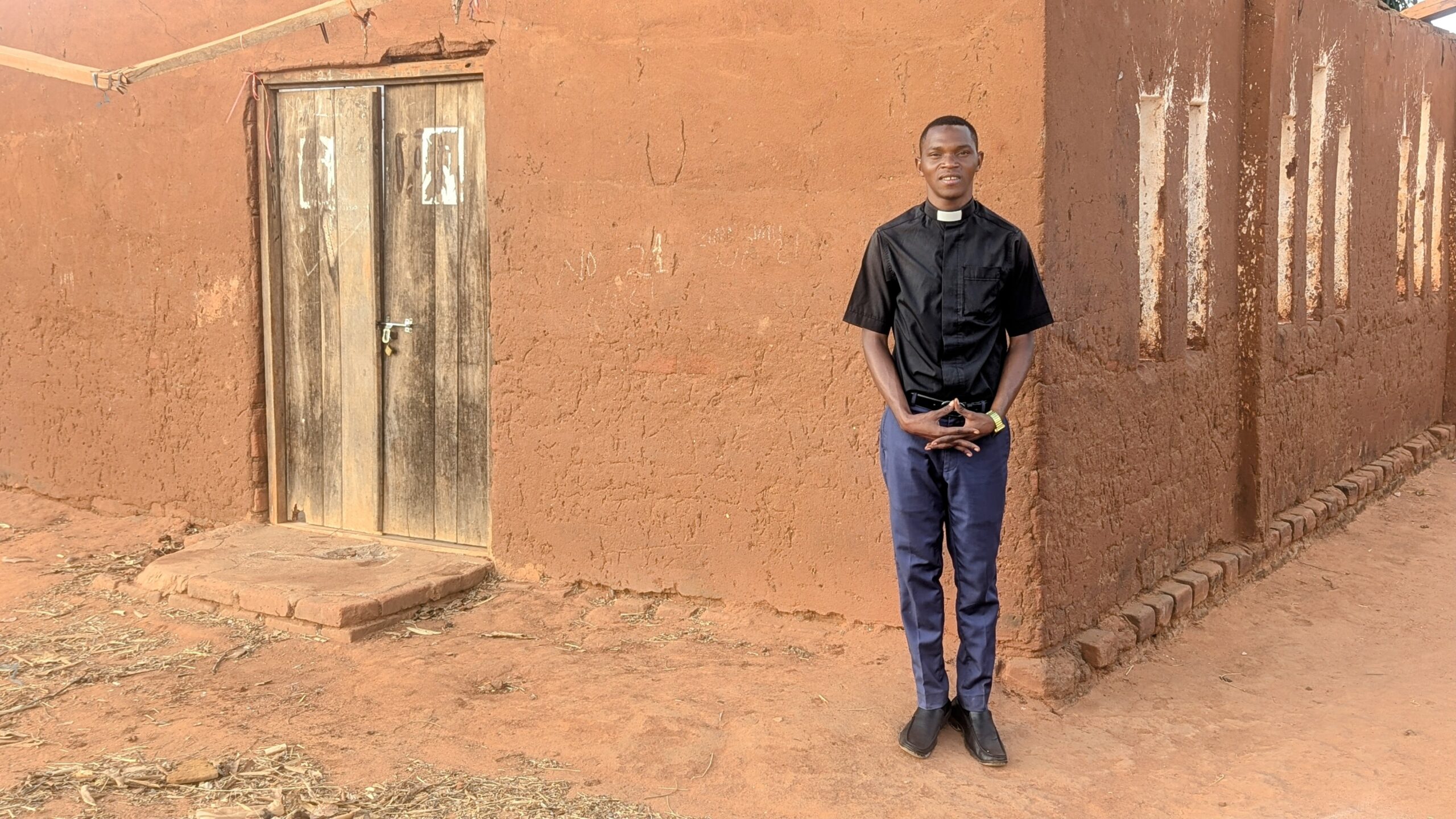Following the eVitabu conference in Uganda in September, APF Projects Coordinator Geoff Holder accepted invitations to Masasi and Morogoro Dioceses in Tanzania. In Masasi, Bishop James Almasi received a call from a rural pastor that offers a glimpse into the challenges faced by Anglican bishops in Africa.

St Michael and All Angels’, Sengenya
Bishop James received the call on Sunday evening as he travelled back from meetings in Dodoma. The voice on the phone spoke quickly, trying to explain what had happened before his limited mobile ‘airtime’ ran out.
The Eucharist service had just finished and the congregation of St Michael and All Angels’ Church in Sengenya in rural Masasi Diocese had returned home. Some of the church leadership remained inside to chat and share a meal together.
In this part of Africa, whirlwinds created by hot air spinning upwards in a vortex are not uncommon, especially towards the end of dry season as the temperature rises. This one, however, was extraordinarily powerful and seemed to come out of nowhere.
The wind whipped through the narrow church windows, mere slits in the mud-brick walls, and ripped the sheet metal roof away from its wooden rafters.

Rt Revd James Almasi (right).
Everyone threw themselves on the ground as the entire church roof lifted and fell, twisting metal, splintering wood and ripping nails crashing down all around. Their quick action meant most emerged from the chaos with only minor injuries. One person would need hospital treatment.
Bishop James visited Sengenya as soon as possible. ‘It is part of the pastoral ministry of a bishop to offer comfort and pray with those in need’ he explained. Arriving at Sengenya, a small crowd had already gathered. Details of what had happened were shared and prayers were said. The bishop was shown around the ruined church building.
Despite everything, Revd Esau, a young deacon who was in the church eating lunch with the others when the whirlwind hit, is grateful. What if it had happened during the Eucharist rather than after most had gone home? What if the damaged electric wiring for the church lighting had electrified the collapsed metal roof? It was a miracle no one was killed. ‘God is good all the time’, he said.

Revd Esau, a deacon from Sengenya
Bishop James agrees that the old mud church building cannot be repaired. Next to it stands the roofless bare concrete block walls of its half-built replacement. ‘They will need much prayer to find the capacity to finish the new church structure before the rain arrives in November or December’, he said.
There is no doubt that the whirlwind that devastated St Michael and All Angels’ Church in Sengenya is a huge blow to the community. Amidst the wreckage, however, a spirit of resilience and gratitude stands out. They believe that divine intervention prevented any fatalities and give thanks.
As the community now faces the daunting task of completing the replacement place of worship before the rains, they do so with a renewed sense of purpose and a belief that, with God’s help, they will emerge from this with more faith, hope and love than before.

